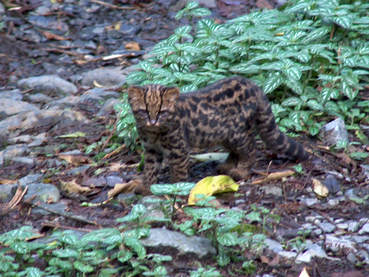
The Oncilla (currently Leopardus pardinoides oncilla) is a small spotted cat endemic to the Central American countries of Costa Rica and Panama. Oncillas are about the size of a house cat or smaller, weighing just 1.5-3 kg or 4-7 pounds. Oncillas are part of the genus Leopardus, which includes ocelots, margays, Geoffrey’s cats, guignas, pampas cats, and Andean cats.
Oncillas are very rare and elusive. In fact, due to the remote habitats they inhabit, oncillas are likely the least studied cat species in the Americas. Oncillas are considered to be endangered, but lack of data means that their viability is highly uncertain. We simply do not know if there are stable populations in Central America, or if they are faced with imminent extinction.
In Central America, our research indicates that oncillas live at upper elevations in oak dominated cloud forests and in a rare alpine environment called the Páramo. Páramo exists only on mountaintops above 2800 meters, and thus encompasses a very small area within Central America. The páramo ecosystem is also a biodiversity “hot spot” with high levels of endemism, meaning many páramo species exist nowhere else on earth. Because páramo is restricted to mountaintops, this ecosystem, and the biodiversity it contains, is highly threatened by climate change. Therefore, Central American oncillas can act as a flagship species for páramo ecosystem conservation, and for garnering action on climate change in this unique ecoregion.
Oncillas are currently considered to be a Central American subspecies of Leopardus pardinoides, often called the little spotted cat, tiger cat, tigrillo or tigrina, which also occur in South America as far south as Argentina.